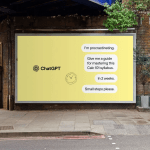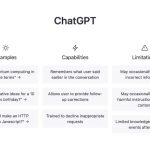We are living in exuberant times with the rapid advancement of technology as never before experienced and, at times, on the verge of euphoria as online BOTs ask us to verify that we are not robots. Times are indeed changing rapidly with the advancements in technology.
According to Statista, the Google Play Store alone releases an average of 99,000 apps per month, and users, on average, use 10 apps per day in their daily activities.
This rapid penetration of technology in our daily lives has impacted the education sector in many ways through the decades, and education and technology have had a symbiotic relationship and found ways to embrace each other’s strengths and weaknesses.
As many know, various AI generators have been available for educational purposes since the advent of Microsoft’s spell check in the 1990s.
The recent news and hype surrounding ChatGPT (Chat Generative Pre-Trained Transformer), that was launched by OpenAI in November 2022, has achieved one million users in just 5 days of its launch and reportedly has over 500 million users today and is sending some ripples through the academic realm raising questions of authenticity, academic integrity, and plagiarism.
In response, it has been reported that education institutions from the US across to Australia have reacted by taking drastic steps imposing bans on the usage of ChatGPT in the schools.
Leveraging on AI
Through these technological innovations, academia has swiftly adapted and leveraged the developments such as the incorporation of the automated MCQ markers, Turnitin plagiarism detectors, Grammarly, Duolingo, AI exam proctoring, and the list is endless.
With this current AI writing and content apps so freely available, educators are once again pivoting and redesigning their teaching and learning repertoire to leverage these new developments.
There are some benefits of utilising these AI tools, for instance utilising the data insights of their student’s performance available from these apps to modify the teaching for a more personalised teaching and learning approach.
There are also avenues to improve the lives of academics by using these tools to aid and support administrative responsibilities like generating reports and preparing lesson plans.
Strategic classroom changes
The classroom challenges of these accessible AI tools cannot be denied as academia is once again playing catch up. However, with strategic changes and steps towards teaching and ensuring authenticity and originality of student’s course submissions can be safeguarded:
- Teaching strategies need to shift towards more focus on the development of soft skills, whereby the classroom evolving as an arena for problem solving, communication, developing group dynamics, analytical discussion, and so on.
- Assessment methods need to be re-evaluated in terms of formative and summative weightage, specific assessment criteria, and refined questioning techniques.
- Re-evaluating policies related to code of conducts with the definition of plagiarism broadened to include bot-generated work.
- There is no avoiding these technological developments, for there will be more refined and smarter tools with the impending IR 5.0 knocking at our classroom doors sooner than we think, it is imperative that we equip themselves and evolve toward the futuristic approach to education.
This article was originally published by Business Today.
MARKETING Magazine is not responsible for the content of external sites.










